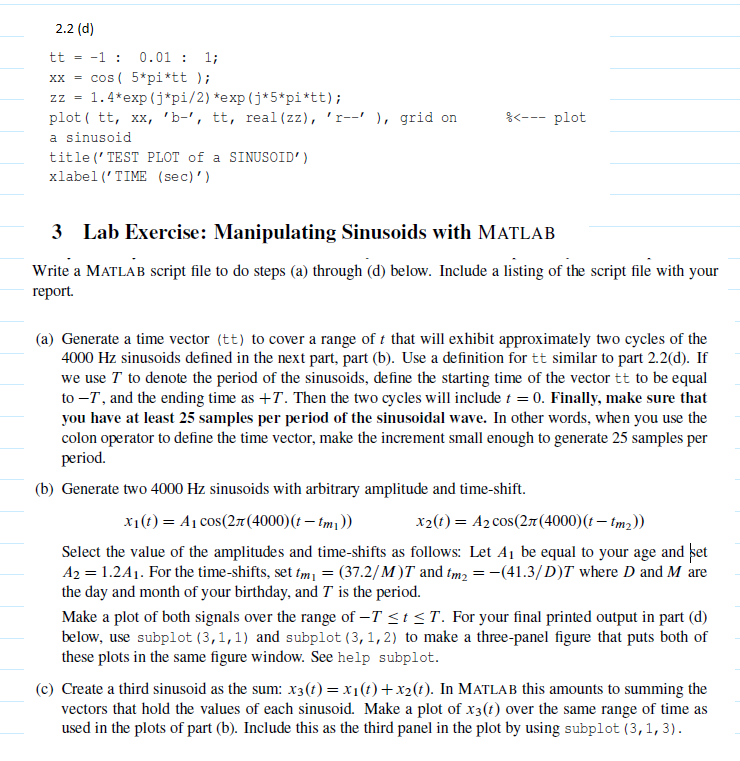Answered step by step
Verified Expert Solution
Question
1 Approved Answer
2.2 (d) tt=-1: 0.01 : 1; xx = cos ( 5*pi*tt ); zz - 1.4*exp (j pi/2) *exp (j*5*pi*tt); plot ( tt, xx, 'b-', tt,

Step by Step Solution
There are 3 Steps involved in it
Step: 1

Get Instant Access to Expert-Tailored Solutions
See step-by-step solutions with expert insights and AI powered tools for academic success
Step: 2

Step: 3

Ace Your Homework with AI
Get the answers you need in no time with our AI-driven, step-by-step assistance
Get Started


